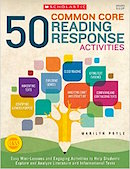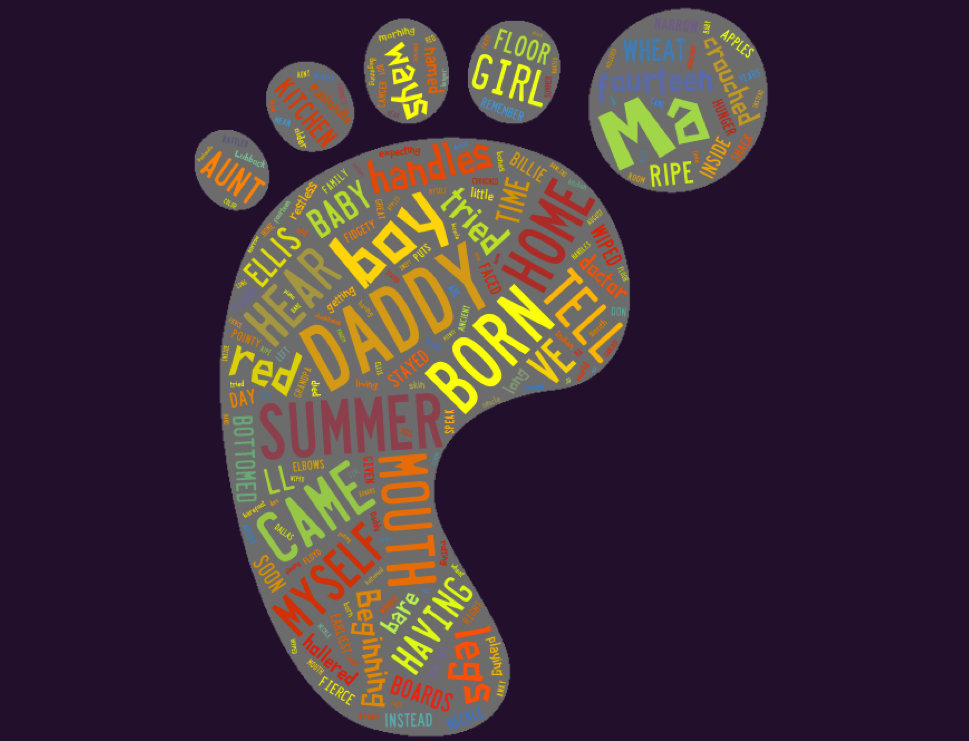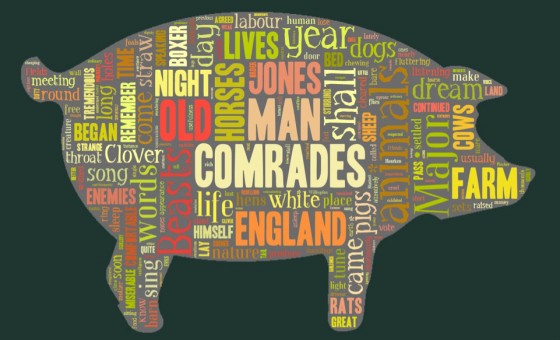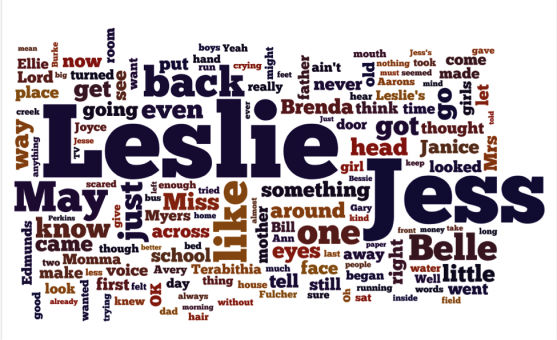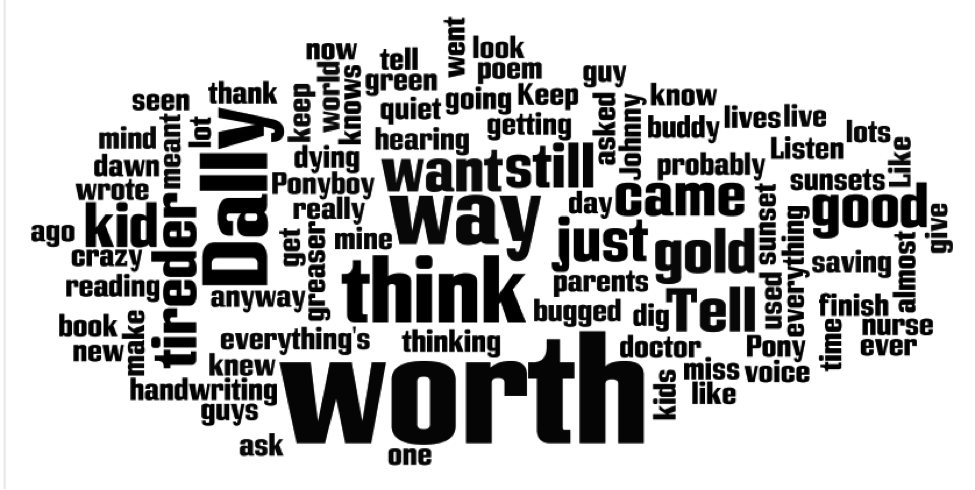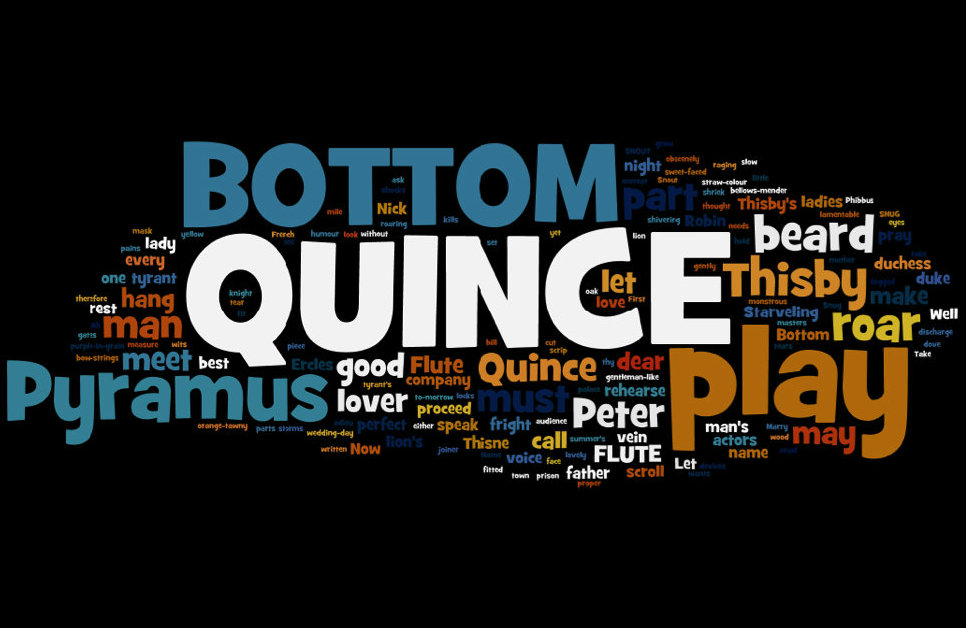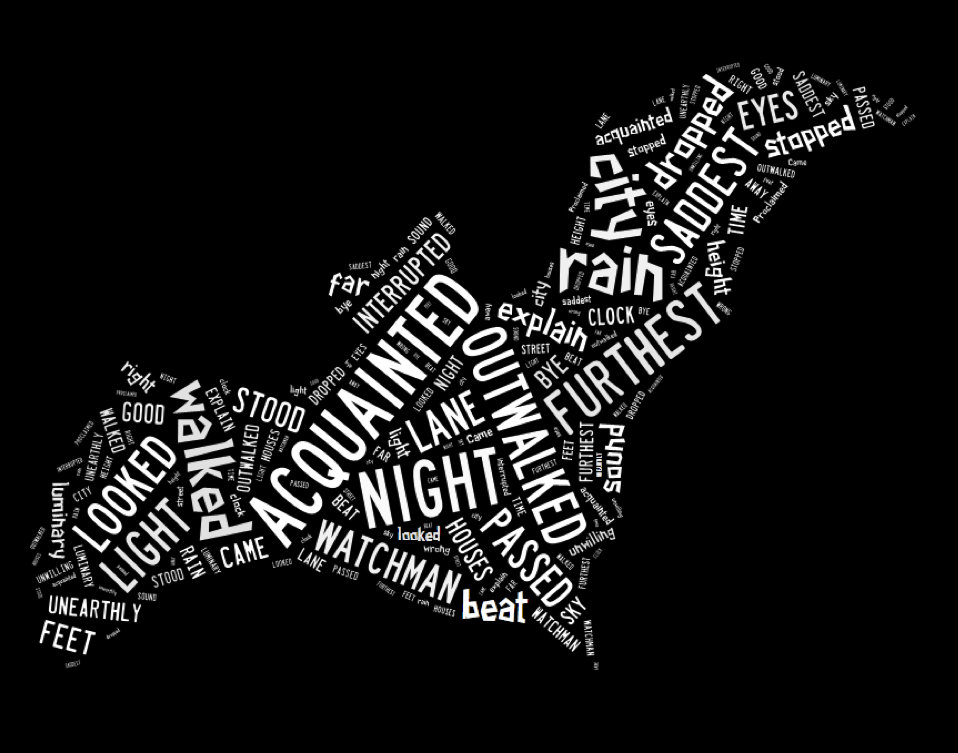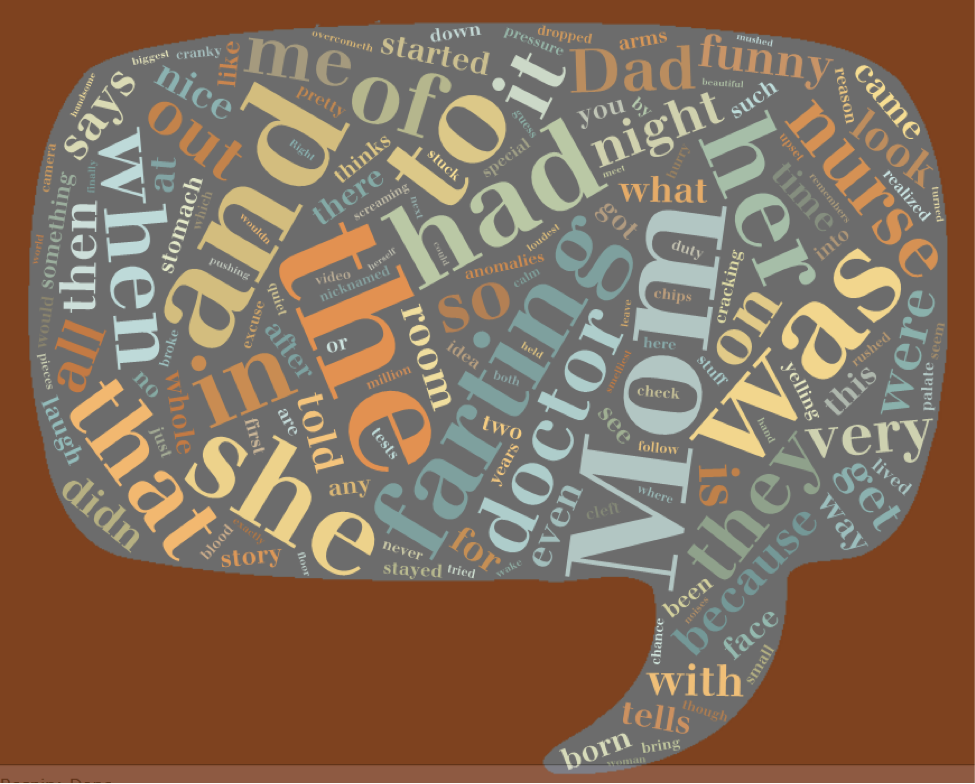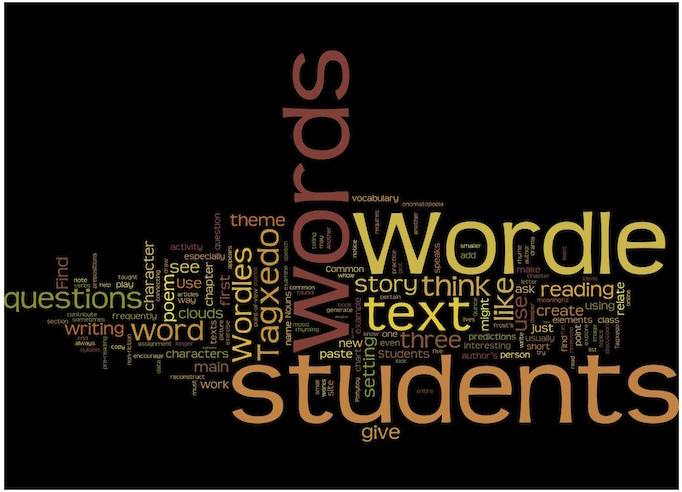Данный список содержит полный список английских слов по теме » Schooling», а также упражнения и тесты для закрепления и активизации лексики.
Содержание:
- Kinds of school
- School building & Interior
- Students & Attendance
- School curriculum & School subjects
- Studying at school & School problems
- Out-of-class activities
- School. Упражнения и тесты по теме «Школа. Обучение»
Запомните:
compulsory education — обязательное образование
free education — бесплатное образование
private school — частная школа
state school — государственная школа
1. Kinds of School (Типы учебных заведений):
- primary school – начальная школа
- secondary (high) school – средняя школа
- higher school – высшее учебное заведение
- comprehensive school – общеобразовательная школа
- a school, specializing in — школа, специализирующаяся на
- gymnasium — гимназия
- lyceum – лицей
- technical school — техникум
- college — колледж
2. School Building & School Interior (Школьное здание снаружи и внутри):
- three-storey building — трехэтажное здание
- classroom — кабинет
- classroom of Russian (= Russian classroom)
- computer classroom – кабинет информатики
- be well-equipped with — хорош-оборудованный
- on the ground (first) floor — на первом этаже
- staff room (teacher’s room)- учительская
- sick room (doctor’s office, medical room) — медпункт
- school office — канцелярия
- canteen – буфет
- dining-hall — столовая в школе
- recreation — рекреация
- cloak-room (changing room) – раздевалка
- assembly hall – актовый зал
- gym- hall (gymnasium ) – спортивный зал
- workshop – мастерская
- headmaster’s office — кабинет директора
- laboratory – лаборатория
- library – библиотека
- entrance hall – вестибюль
- school museum – школьный музей
- aquarium — аквариум
- diploma — грамота
- palm — пальма
- poster — плакат
- stand — стенд
3. Staff, Students & Attendance (Персонал, учащиеся и посещаемость):
- headmaster (headmistress) — директор
- director of studies — завуч
- form mistress — классная руководительница
- librarian — библиотекарь
- nurse — медсестра
- security guard — охранник
- pupil — ученик начальной школы
- student — учащийся (ученик средней школы)
- schoolboy — школьник
- junior pupils – ученики младших классов
- senior students –старшеклассники
- attend lessons and classes — посещать уроки и занятия
- enter school — поступить в школу
- leave (finish) school — закончить школу
- pass from …. to….- перейти из….. в….
- miss school — пропускать школу
- change school — поменять школу
4. School Curriculum & School Subjects ( Учебный план и предметы):
- timetable — расписание (on the timetable)
- curriculum — учебный план
- term – четверть
- academic year – учебный год
- at the end of each term… — в конце четверти
- obligatory — обязательный
- optional – факультативный
- lesson of Chemistry = Chemistry lesson — урок химии
- learn (study) different subjects — изучать различные предметы
- advanced mathematics – углубленный курс математики
- Science — точные науки
- The Humanities — предметы гуманитарного цикла
- study Science/ the Humanities — изучать предметы научного / гуманитарного цикла
- attend the optional (elective) class in ….. – необязательный, факультативный
Учебные предметы на английском языке: Maths, Algebra, Geometry, Russian, English, Biology, Geography, History, Literature, Chemistry, Botany, a foreign language, Physics, PE (Physical Education), Design and Technology (технология), Information Technology, Mechanical Drawing, Social Science / Social Studies (обществоведение), Art, World Culture (МХК), Economics, Handicraft (ТРУД): (Cooking, Needlework,Woodwork, Metal work).
5. Studying at School & School Problems (Учеба в школе и школьные проблемы):
- do well/ badly — учиться хорошо/ плохо
- behave well / badly- вести себя хорошо/ плохо
- solve problems in mathematics, physics — решать задачи по математике, физике
- prove theorems — доказывать теоремы
- do equations — решать уравнения
- do experiments in the lab — делать опыты в лаборатории
- swot smth – зубрить
- make smth out – понимать, разбираться в чем-то
- cheat – списывать, пользоваться шпаргалками
- prompt – подсказывать
- work by fits and starts — заниматься урывками
- studies — занятия
- exams — экзамены
- extra lessons — дополнительные занятия
- private lessons — частные уроки
- take lessons — брать уроки
- give lessons — давать уроки
- take an exam in Maths — сдавать экзамен по математике
- fail an exam — провалить экзамен
- pass an exam — сдать экзамен
- weak point — слабое место
- poor memory — плохая память
- can’t remember dates (words, formulas) — не запоминать даты, слова, формулы
- fail to retell texts – не получается пересказывать тексты
- punish — наказывать
- punishment — наказание
6. Out-of-class Activities (Внеклассная деятельность):
- school activities – школьная деятельность
- take part in school activities — принимать участие в школьных мероприятиях
- have school traditions — иметь школьные традиции
- choir — хор
- club — кружок
- Drama Club — театральный кружок
- go hiking — ходить в поход
- go on excursion to – ездить на экскурсию в…..
- performe in school theatre — играть в школьном театре
- trip to… – поездка в …
Я надеюсь, что приведенный полный список английских слова по теме «School» поможет вам подвести итог изучения данной темы, а упражнения и тесты ниже помогут активизировать изученные слова и уверенно использовать их в устной и письменной речи на английском языке. Всем успехов!
School. Упражнения и тесты для активизации словарного запаса
Test 1. School
- They ___________ me a lot at school. (taught, studied, learned)
- I’m ____________my final exam next month. (passing, taking, making)
- “ Have you ________your homework?” Pat’s mother asked her. (made, done, wrote)
- Children have to carry heavy________. (sacks, schoolbags, handbags)
- They have a very good school ____________. (restaurant, bar, canteen)
- _________is my favourite subject. (Historic, History, Story)
- I’m not _______________ Geography and Physics. (well with, good with, good at)
- These pupils are waiting for their teacher in the _________. (classroom, lesson, class)
- Sit ___________your desk and go on with your work. (at, on, near)
- No one likes to _____________ an exam. (lose, fail, fall)
Test 2. School Life
- Who is the ________ of your school? (director, headmaster, chief)
- Clare was very popular with her ________. (schoolfellows, schoolchildren, schoolmates)
- Mathematics is a ______________subject at school. (forced, compulsory, required)
- A___________ is all the different courses that are taught in a school or college. (curriculum, scheme, timetable)
- A __________ is a state school in which children of all abilities study together. (public school, elementary, comprehensive)
- I’m _________English and French classes. (following, attending, visiting)
- A nursery school is for ________. (babies, infants, nurses)
- Every one of their children___________ well at school. (did, succeeded, managed)
- A ________ is a school in Britain for children aged between 11 and 18 who have a high academic ability. (grammar school, state school, special school)
- It’s hard to ___________into the university. (enter, get, go)
- The function of school is to ______________ children. (bring up, educate, encourage)
- We’re building a car at our school ____________ (workshop, laboratory, workplace)
Exercise 1. Translate the text into English
Exercise 2. Describe the school where you study using the plan below and the vocabulary.
- Introduction (give general description of the place and people, some background and history).
- Main body (good/bad points now, your problems, how things will develop in the future).
- Ending (Mention some possible changes at your school).
Vocabulary (positive/negative):
- Location:
not far from, within walking distance from…, it is about 10 minutes walk from, it takes me 10 minutes to get to school.
- Building/Classrooms/ Equipment:
(+) brightly painted/decorated, spacious, comfortable, modern, new, cozy
(-) depressing, gloomy, old, old-fashioned, tasteless, uncomfortable
- Classmates/ Teachers/ Friends:
(+) friendly, funny, helpful, confident, bright, encouraging, motivating, well-organized, experienced, popular with
(-) boring, noisy, disorganized, boring, strict, demanding, discouraging
- Lessons/ Subjects:
(+) favourite, important, motivating, well-organized, I am good at
(-) long, boring, difficult, disorganized, I am bad at
- Out of school activities:
in-school clubs, excursions, trips, theatre, hiking.
Exercise 3. Describe the school where you would like to study using the plan below and the same vocabulary.
Exercise 4. Answer the questions.
- How often do you miss your school?
- Do some children behave badly at school?
- What do they do?
- What kind of punishment do teahers use in your school?
- What is the most (least) effective punishment, in your opinion?
Exercise 5. Give a talk on the following topics.
- Teenage problems at school.
- Your idea of a perfect school.
- Your idea of a perfect teacher.
- Education at school.
- The code of conduct.
- Punishments at school.
- My best school friend.
Exercise 6. Fill in the gaps.
Exercise 7. Write a letter to your friend.
… Recently I have moved to a new flat. I like my new school. We can choose subjects to study. I have chosen Maths and Physics. I like them because I am good at solving problems. And what about you? Do you like your school? What subjects are you good at? I hope you’ll write a lot of interesting things.
…
Best wishes,
John
Picture Vocabulary Lessons and Word Games For Beginners
Learn and practise recognising simple English words with these easy picture vocabulary lessons and matching games for adult beginners, young learners, and elementary students.
Our online lessons and activities are mobile/tablet friendly, and are suitable for classroom use or self-study at home.
-
Word Lists
-
Word Games
New and Popular Picture Vocabulary Lessons and Games
Easy Picture Vocabulary Lessons for English Beginners
Picture Vocabulary Lessons for Elementary English Students
Easy Picture Vocabulary Matching Games For English Students
As a beginner English teacher, it is crucial to develop certain skills to fully support the learning process of students. Lesson planning, boardwork, and error correction — all these skills are essential in the classroom and foster the successful and rapid development of the students.
In this article, we provide a simple but detailed guideline on how to improve your teaching skills and make ESL lessons organised, structured, and effective, even with little teaching experience.
Table of contents:
- Lesson planning
- Observation checklist
- Tips for better boardwork
- Error correction
- ELT glossary
Lesson planning
An effective lesson plan helps the teacher to choose the materials, adapt the activities to the student’s needs, and be prepared for potential problems.
Step 1 — Identify the aims of the lesson
First, identify the type of the lesson: skills (listening, reading, writing, speaking) or systems (vocabulary, grammar, functions, pronunciation). Then, based on the desired outcomes, establish the main aims, sub-aims, and personal aims. For instance:
Type of Lesson: Grammar, Vocabulary, Functions, Reading, Listening, Writing, Speaking
Main Aim(s):
- To provide clarification and practice of humour related vocabulary in the context of an anecdote and self-quiz.
Sub-Aims:
- To enhance oral fluency on the topic of humour.
- To improve reading skills for gist and specific information on the topic of humour.
Personal Aims:
- To maintain consistent monitoring.
- To give clear instructions.
- To improve boardwork.
Step 2 — Predict potential problems in the lesson
Secondly, list any potential problems that learners might have with classroom management or with specific skills (speaking, writing, reading, listening). Consider how you would address these potential problems with classroom management.
For example:
| PROBLEM | SOLUTION |
|---|---|
| There might be an odd number of students, which will make pair work problematic. | I will ask some students to work in groups of three and make sure to change them, so that they had equal opportunities |
| There might be some fast finishers. | I will monitor attentively and when I see a fast finisher, I will give an extra task to them (see the tasks in the procedure). |
| Some words might be unknown for sts. | I will pre-teach blocking vocabulary after reading for gist. |
| Some sts might want to read for detail and understand all the words while reading the text for the first time | I will give clear instructions and ask ICQs (See the procedure).I will also tell the sts not to worry if they do not understand all the words. |
Step 3 — Plan the stages and activities of the lesson
Here are some lesson frameworks for skill and system lessons.
Receptive skills lessons (reading and listening):
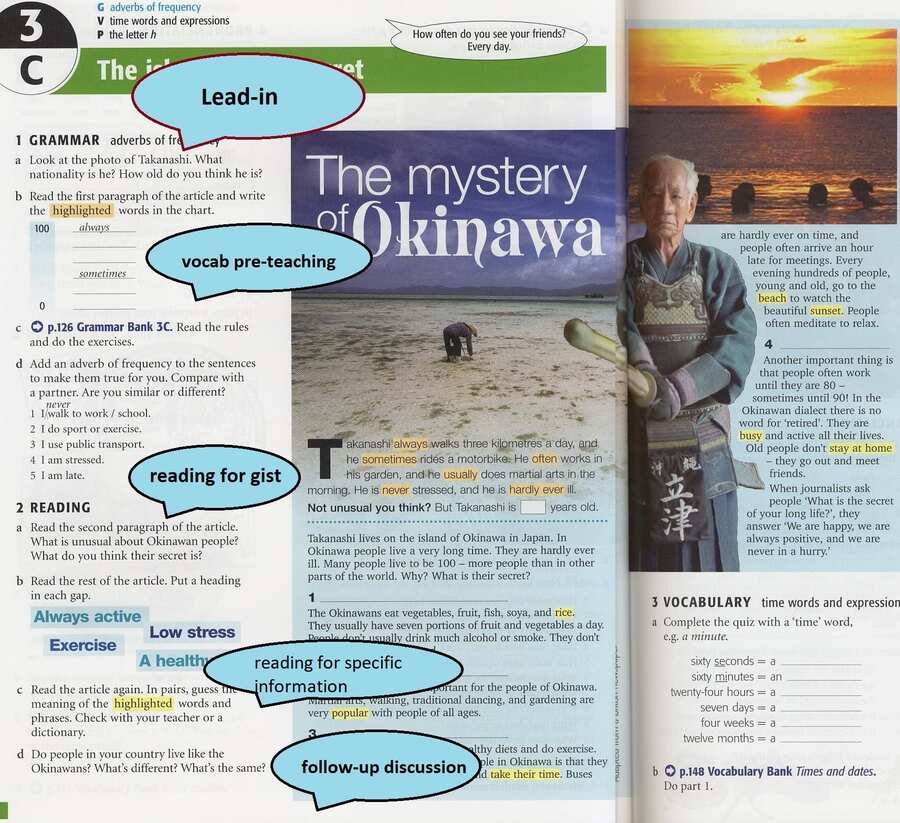
Productive skills lessons (writing and speaking):
Systems lessons (vocabulary, grammar, functions, pronunciation):
Lesson frameworks will differ if you use TTT approach (test-teach-test), TBL (task-based learning) or others. Don’t hesitate to adapt the materials.
Step 4 — Double check everything
Use this checklist to see if your lesson plan is done:
Here’s a lesson plan template you can use.
Read as well:
Observation checklist
When you just start teaching, what is really beneficial is to observe your colleagues’ lessons. Here is a checklist of areas you should pay attention to and analyse (both positive and negative aspects).
1. Classroom management:
- TTT: Adjusting teacher’s own use of language in the classroom according to the learner group, speaking at a moderate pace, projecting the voice well, and balancing TTT-STT appropriately.
- Appropriate L1 usage (no more than 30% of TTT in L1 for Beginners).
- Rapport, eye contact, body language, and positioning.
- Using a variety of effective interaction patterns (S, S-S, T-S, T-Ss).
- Giving clear instructions (and effective instruction-checking questions if needed).
- Monitoring learners (checking in with students immediately after giving the task, helping students who struggle to complete the task, and not interrupting pair work unnecessarily).
- Managing materials and boardwork (keeping the board neat and helpful for students to understand and remember the material).
- Providing appropriate feedback and error correction (on content and language).
- Beginning and finishing lessons on time.
2. Lesson planning:
- Selecting, adapting, and designing materials, activities, resources, and technical aids according to the aims of the lesson and students’ needs.
- Ensuring balance, variety, and communicative focus in tasks.
- Logically ordering the lesson stages and activities.
- Allocating appropriate timing for different stages of the lesson.
- Ensuring smooth transitions between activities and stages of the lesson.
- Anticipating potential difficulties in the lesson and suggesting solutions to them (check Learner English for common problems).
3. Teaching skills and language:
- Helping students understand reading and listening texts.
- Helping students develop oral fluency.
- Helping students improve writing skills.
- Setting a clear context.
- Conveying meaning clearly from context.
- Using a range of questions to elicit and check understanding.
- Providing accurate and appropriate models of oral and written language.
- Clarifying meaning, form, and phonology to an appropriate depth.
- Showing awareness of differences in register.
- Providing appropriate practice of language items.
- Pair checking.
4. Learners:
- Teaching a class with awareness of the needs, interests, backgrounds, and learning styles of the students.
- Establishing good rapport with the students and ensuring their involvement.
- Maintaining an appropriate attitude towards latecomers (accommodating them if possible and not letting them interrupt the flow of the lesson).
- Working with fast finishers.
You can find a template for observations here. Also, use this self-evaluation sheet to “observe” your own lessons.
Tips for better boardwork
- Plan ahead to avoid writing target language twice or erasing important information. Divide your board into sections, including areas for new vocabulary, presentation, and homework. Avoid overcrowding and wipe unnecessary language.
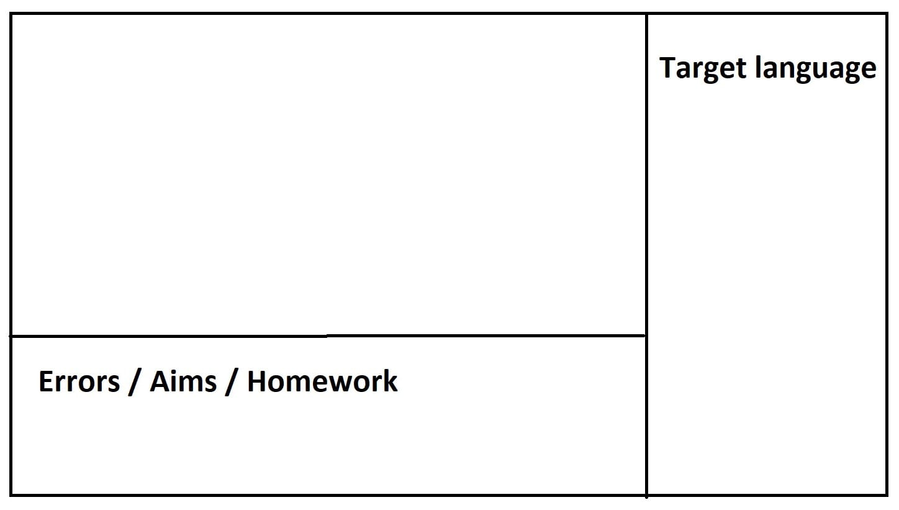
- Keep your board neat with readable handwriting and clear, big letters.
- Use consistent colour coding to highlight different types of information, such as mistakes or pronunciation.
- Print words or phrases and stick them up when necessary to save time. Write on the board while students work on other tasks.
- Ensure all students have a clear view of the board and avoid blocking anyone’s sight.
- Practise quick sketches to illustrate vocabulary and activities. Draw in shapes.
Error correction
Students shouldn’t be afraid of using the wrong tense or omitting an article, as making mistakes is proof of learning, but the question is how teachers handle these mistakes. What should we correct, when should we correct it, and how should it be corrected?
Step 1 — Identify the reason for making mistakes
- L1 interference — happens when the learner’s mother tongue affects their performance in the target language. For example, learners make grammatical mistakes because they apply the same patterns as in their L1.
Read more about this in Learner English, a practical reference guide that compares the relevant features of a student’s language with English. It helps teachers predict and understand the problems their students face. The guide has chapters focusing on major problems of pronunciation, grammar, vocabulary, and other errors.
- Developmental errors — occur naturally as part of the learning process when a learner attempts to say something beyond their language level.
- Overgeneralization of a rule — the process of extending the application of a rule to items that the language norm excludes.
- Fossilised errors — happen when incorrect language becomes a habit and is challenging to correct.
- Slips — mistakes made by a learner because they are not attentive or are tired.
- The nature of English — some set collocations and idiomatic expressions may cause errors.
- Bad models — students learn poor examples and incorrect language from various available resources.
Step 2 — Choose the best time to correct (when)
- Hot correction — correct errors as soon as you notice a student making them.
- Cold correction (delayed error correction) — to avoid interrupting the learner during speaking activities, focus on monitoring and recording their language. Then, correct errors after the activity or at the end of the lesson when you can dedicate more time to error correction.
Step 3 — Choose an error correction technique (how)
Non verbal:
- Finger correction — use fingers to show the mistake in the sentence.
- Gestures — use gestures to show when students make mistakes. For example, gesture backward with your hands to show students they didn’t use the past tense. For incorrect pronoun use, point to themselves with a look of shock or surprise.
- Facial expressions — use exaggerated facial expressions to signal a mistake.
- Cards (visual reminders) — some students often omit “-s”, “be”, etc. You can prepare a card with a big “S” or “AM/IS/ARE” and raise it every time students make this mistake.
- Visual analysis — write the sentence on the board and highlight indicators, question marks, everything that might help the student correct the mistake, e.g.:
Verbal:
- Repeat up to the error — repeat the whole sentence up to the error and make a pause, waiting for the student to say the correct word/phrase. If the student has difficulty correcting the mistake, give options.
- Demonstrate more examples — elicit or demonstrate more sentences with the same vocabulary or constructions.
- Echoing — echo the mistake with emphasis on the mistake.
- Recast — reformulate the utterance into a correct version (emphasising the place of the mistake) and encourage to continue the conversation.
ELT glossary
A list of essential English language teaching (ELT) terminology.
Chant: A repetitive phrase, verse, or song used to practise pronunciation and vocabulary.
Classroom management: The process of organising the classroom, activities, and learners, including seating arrangements and managing interaction patterns.
Concept checking questions (CCQ): Questions used to confirm a learner’s understanding of a new language.
Content and Language Integrated Learning (CLIL): An approach to teaching non-language subjects, such as science or geography, in a target language.
Fossilisation: When incorrect language becomes a habit that’s difficult to correct.
Guided discovery (GD): An approach where the teacher provides examples of the target language and guides learners to work out the rules for themselves.
Ice-breaker: An introductory speaking activity that helps learners get to know each other.
Interaction patterns (IP): The different ways learners and teachers interact in class, such as in pairs, groups, or open class.
Jigsaw listening/reading: A communicative listening or reading activity where learners share information to gain a complete understanding.
L1: A learner’s first language or mother tongue.
Learner autonomy: When learners can set their own goals and organise their own study.
Mingle: An activity where learners walk around the classroom to complete a task.
Presentation, Practice, and Production (PPP): An approach to teaching a new language that involves presenting, practising, and producing the language in a communicative way.
Rapport: The relationship between the teacher and learners.
Recast: To reword a sentence or phrase to improve it.
Scaffolding: Temporary support teachers provide to help learners do a task, communicate, or understand.
Settler: An activity used to calm learners after a lively activity.
Student talking time (STT): The time learners spend speaking in a lesson.
Target language (TL): The language focused on in a lesson, such as grammar or vocabulary.
Task-based learning (TBL): An approach where the teacher asks learners to do a task with an achievable result.
Teacher talking time (TTT): The time the teacher spends talking in a lesson.
Test-teach-test (TTT): An approach where learners are tested on a topic before and after instruction.
Total Physical Response (TPR): a teaching method where the teacher gives instructions in the target language and the learners physically respond by carrying out the actions. For example, if the teacher says “stand up”, the learners stand up.
YLE: Young Learners English coursework or Young Learners English test.
Remember: a prepared teacher makes a confident teacher!
Question
Обновлено на
11 марта 2022
-
Корейский
-
Английский (американский вариант)
-
Упрощенный китайский (Китай)
-
Русский
Вопрос закрыт
Вопрос про Английский (американский вариант)

When you «disagree» with an answer
The owner of it will not be notified.
Only the user who asked this question will see who disagreed with this answer.
-
Английский (американский вариант)
Usually interchangeable, but there are different connotations to each word:
Lesson = the material covered in one chapter of a textbook or one session of class. A «lesson» can last about an hour or two.
Class = the time when students get together to listen to a lesson of a particular subject in school. «I’m in physics class right now.»
Class can also mean the group of students.
Also, all of the lessons for the semester or year for one subject.
Here’s another word:
Course = the entire year or semester worth of classes of one or more related subjects. «My accounting course this semester includes 3 different classes that all meet for 2 lessons every day.»
-
Португальский (бразильский вариант)
-
Португальский
lesson = learning.
Lesson Number One: «How to add numbers»
-
Английский (американский вариант)
Usually interchangeable, but there are different connotations to each word:
Lesson = the material covered in one chapter of a textbook or one session of class. A «lesson» can last about an hour or two.
Class = the time when students get together to listen to a lesson of a particular subject in school. «I’m in physics class right now.»
Class can also mean the group of students.
Also, all of the lessons for the semester or year for one subject.
Here’s another word:
Course = the entire year or semester worth of classes of one or more related subjects. «My accounting course this semester includes 3 different classes that all meet for 2 lessons every day.»
-
Корейский
[News] Эй, привет! Тот, кто учит язык!
Вы знаете как улучшить свои языковые навыки❓ Все, что вам нужно – это исправление вашего письма носителем языка!
С HiNative ваше письмо носители языка могут исправить бесплатно ✍️✨.
Зарегистрироваться
-
В чем разница между class и lesson ?
ответ
Class is where you go to learn the lesson
-
В чем разница между tier и class и level ?
ответ
Tier is mostly used for ranks lets say, while class on the other hand has some meanings like your School room: «I am going to my class»
Level… -
В чем разница между class и lesson ?
ответ
when you go to school you take classes, ex: English class, Math class, World History class
and you learn lessons in those classes, ex: «In to… -
В чем разница между class и course ?
ответ
«I have to go to math class.» «I’m taking a course in math.»
-
В чем разница между class и lesson ?
ответ
You teach a lesson during a class.
-
В чем разница между lessen и lesson ?
ответ
lessen is to make smaller e.g. I will lessen your pain.
Lesson is a period of learning or teaching or just learning something e.g. We had an… -
В чем разница между class и lesson ?
ответ
It’s the same you can say «I was in an english class this morning» and you can also say «I had an English lesson this morning»
-
В чем разница между tuition и lesson ?
ответ
Tuition actually means Studiengebühr
“Tuition for fall semester is due in two weeks. Time to call my mom.”
Lesson is more like Stunde in th…
-
В чем разница между class и lesson ?
ответ
While they are often synonyms, they are more often not. A class is often a specific time period. So you can have class 3 days per week. A …
-
В чем разница между grade и class ?
ответ
Grade is the group of people that you graduate high school with. There are multiple different classes in each grade. A class is a group of st…
- Какой In delivering the class, … звучит наиболее естественно?
- I have heard of class system in the UK. Brits are classified by their accents. If I spoke with a …
- At the English class I often go to on Sundays, there sometimes show up people who are very fluent…
- В чем разница между man и men ?
- В чем разница между I’m down for it и I’m up for it ?
- В чем разница между signature и printed name ?
- В чем разница между rape и molest ?
- В чем разница между aren’t, isn,t и don’t, doesn’t ?
- В чем разница между будет запущена и запустится ?
- В чем разница между Стучать у двери и стучать в дверь ?
- В чем разница между ларёк и Забегаловка ?
- В чем разница между наследствие и наследство ?
- В чем разница между «Кыргызстана» и «Кыргызстане» ?
- В чем разница между чайник долго закипает и чайник долго не закипает ?
- В чем разница между будет запущена и запустится ?
- В чем разница между Стучать у двери и стучать в дверь ?
- В чем разница между ларёк и Забегаловка ?
- В чем разница между мне хотелось купить себе такое же платье, как у подруги и мне хотелось купить…
Previous question/ Next question
-
I’m having trouble understanding the name of this song. What does てゐマ mean?
https://www.youtube…. - Что значит 大学行くなら、フランスの方に通う予定なの??
Что означает этот символ?
Символ показывает уровень знания интересующего вас языка и вашу подготовку. Выбирая ваш уровень знания языка, вы говорите пользователям как им нужно писать, чтобы вы могли их понять.
-
Мне трудно понимать даже короткие ответы на данном языке.
-
Могу задавать простые вопросы и понимаю простые ответы.
-
Могу формулировать все виды общих вопросов. Понимаю ответы средней длины и сложности.
-
Понимаю ответы любой длины и сложности.
Подпишитесь на Премиум и сможете воспроизводить аудио/видеоответы других пользователей.
Что такое «подарки»?
Show your appreciation in a way that likes and stamps can’t.
By sending a gift to someone, they will be more likely to answer your questions again!

If you post a question after sending a gift to someone, your question will be displayed in a special section on that person’s feed.

Устали искать? HiNative может помочь вам найти ответ, который вы ищете.
Editor’s note: The word cloud generators Wordle (not the game) and Tagxedo have faded away since Marilyn wrote this excellent post. The ideas can be easily adapted to other similar apps still available. Check out this We Are Teachers article (6/28/22) for a Top 10 list or see if a learning platform you use has a generator built in. Our favorite app is Word Art which includes most tools mentioned here and offers free standard image downloads.

Everyone knows about word cloud generators. These colorful word clouds are everywhere – on posters, playbills, T-shirts, and even take-out menus. We enjoy the color and pattern, and the way new words keep jumping out at us the longer we look. They can also be a powerful teaching tool, too, with the right directions and questions.
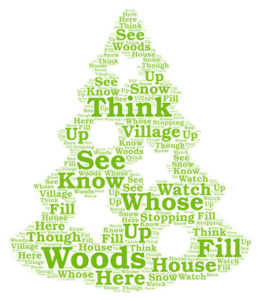
There is a caveat, however: You must be able to copy and paste (or type) your text into the word cloud generator site. Older works (like Frost’s poems) are in the public domain and are easily found online. Google the text you want to use and see what you can find.
Usually, I like to use just one slice—a chapter or section—of a longer text so we can examine it closely. But sometimes it’s interesting to paste a complete book into a generator, to notice overall trends of the work. Once you’ve created a piece of Word Art, you can save it and print it to use in class.
10 ways I use word clouds with students
- After reading, have students examine the bigger vs. the smaller words. Ask questions like:
- Which three words are the biggest? Why, do you think? What does this tell us about the story? (Common answers include main character identification, the main setting, or verbs like “said” if there’s a lot of dialogue.)
- Find three medium words. Why are they medium-sized, do you think?
- Find three small words that surprise you. Maybe you don’t remember them from the text, or maybe you think they don’t belong.
Here is the first poem from Karen Hesse’s Out of the Dust in a Tagxedo image of a baby’s footprint, since the poem is about Billie Jo’s birth and her mother’s new pregnancy. Think of the questions above as you study the picture.
A note about Tagxego: There are several shapes to choose from. Some of the words may appear quite small, but the site is interactive—if you use Tagxego online instead of as a photocopy, all students have to do is hover over a word to see it enlarge for easy reading. Also, with Tagxedo, you can add another layer to your questions, by asking students to relate the shape to the reading.
- After reading, ask students questions about literary elements. For example:
- Find three words that relate to character traits. Which character do they pertain to, and why?
- Find three words that relate to a setting. Which setting do they describe, and how?
- Find three words that relate to a theme. What theme does each word point to? Why do you think this is a theme?
- What is the mood of this chapter (or poem)? Find 3-5 words that contribute to the mood.
- (For first person point-of-view): Who is telling this story? Is his/her name in the Wordle? If so, what is the size? (The goal here is to heighten the awareness and parameters of first-person point-of-view. In a first person narration, the narrator usually wouldn’t call herself by her name, so it wouldn’t be in the Wordle, unless she is called or talked about by the other characters. Knowing this, I sometimes ask the question backwards to students. For example, I would say, “Why isn’t the name Ponyboy in the Wordle? Isn’t he the main character?”)
Here is another Tagxedo image of the first chapter of George Orwell’s Animal Farm. Notice words that pertain to the above topics about character, setting, and theme.
- Use a word cloud as a pre-reading activity. Before you read, create a cloud out of the story’s first chapter, or the entire story or poem. Give students time to really peruse it as they wonder about the text. Here are some possible questions:
- Who do you think the main characters will be?
- Where and when do you think this story will take place?
- What do you think this story will be about?
- What might a theme of this story be? What could be a deeper meaning?
- Can you find a new word that you don’t know? How about two or three?
- Do you think a young person is telling this story? Why or why not?
Here’s a word cloud of the entire text of Bridge to Terabithia by Katherine Paterson. Students can make interesting predictions and generate curiosity about the book as a whole by studying it.
- Before reading something brief, give it to students as a word cloud and have them try to reconstruct it.
I like to give Johnny’s letter to Ponyboy as a word cloud before we read it in the text, and have students try to reconstruct it before we look at the “answer.” (I encourage them to add any articles, prepositions, or other connecting words they think might be missing in the cloud image.)
At this point in the text, Chapter 12, students have enough prior knowledge about the characters and plot to give this exercise a worthwhile shot. They won’t rewrite it exactly like S.E. Hinton’s version, but they’ll be close. And regardless of the end product, they work with the words in a meaningful way, incorporating what they know about the story. Here’s what the letter looks like as a Wordle:
- Have students create an original piece of writing from the word cloud.
After examining a word cloud, it’s fun to have students write haikus or other short “found poems” from the words. These can be about the text or not, and I encourage them to add any necessary connecting words. For example, I’ll set a requirement such as: “Write a haiku from the word cloud using at least five words.” That way, the students must use the word cloud, but the resulting poem won’t become too forced.
Another writing assignment I like to give is to have students write a paragraph about their own lives, using at least ten words from a word cloud. This requires students to connect the author’s words, and, subtly, elements of the text, to their own lives.
- Use word clouds with non-fiction. Depending on the non-fiction text, you can ask questions like:
- Which words support the author’s claim?
- Which words function as transition words in the text?
- Which words are part of the facts? Which are more opinion words?
- Which words contribute to the author’s tone?
- Formulate three questions for the author, using words from the cloud.
- Use word clouds with drama.
Pasting a scene, act, or whole play into a word cloud generator can be especially interesting. Not only will students see elements of the plot, themes, characterization, and possibly setting; a drama word cloud will also show who speaks most frequently, and who or what is spoken about the most. If the play is formatted to indicate speakers in all caps, some word generators will keep the speakers capitalized in the cloud.
Look at Act I, Scene ii from Shakespeare’s A Midsummer Night’s Dream. We can see that Quince speaks the most lines, followed by Bottom. The main topics of discussion are the play, Pyramus, Thisbe, a beard, the roar, and Quince himself:
- Use word clouds as a pre-reading activity to explore vocabulary, rhyme, syllables, or onomatopoeia.
- For vocabulary, have students make a chart from the word cloud:
- For rhyme (this works well with poetry word clouds especially), have students find any rhyming pairs or triplets. For syllable practice, have students create a chart like the one above for 2-syllable, 3-syllable, and 4-syllable words. For onomatopoeia, have students list any onomatopoeic words and form sentences with them. Any attention you can draw to the words themselves before reading will prime students to go deeper into the text when they read.
- Look at the Tagxedo of Frost’s “Acquainted with the Night” below. Students could pick out rhyming words and words of different syllable counts, to attune themselves to sound and meter before even reading the poem:
- Use word clouds to highlight parts of speech.
Create a chart with the headings “Nouns” (or even “Common Nouns” and “Proper Nouns”), “Verbs,” “Adjectives,” and “Adverbs.” Students can list words as a pre-reading or post-reading activity.
Note that in most word cloud generators, smaller, more common words are automatically filtered out. However, you can change this option in the settings in some apps (WordArt, for example) if you want to have students focus on prepositions, articles, conjunctions, pronouns or helping verbs.
Below is a Tagxedo of the “How I Came to Life” section in Chapter 1 of R. J. Palacio’s Wonder, with the common words left in (a bonus question for the students could be about why it is shaped as a speech bubble):
- Have students create word clouds.
Students can be taught to paste short texts into a word cloud generator and create their own questions for the class – the ultimate demonstration of understanding! Or, students could be given a pre-made cloud and asked to generate questions from it. Another effective use, especially for older students who might be writing full essays, is to have students copy and paste their own writing into the cloud generator. The most frequently used words in the students’ writing can then be analyzed.
A few more ideas and tips
When we work with word clouds in my class, I usually give students a mix of all the methods suggested here. A question sheet might ask about characters, setting, theme, predictions, grammar and vocabulary all at once, and then end with a short writing assignment.
Whatever inquiry we do with a word cloud generator, students always are excited to see them. And I always let them work in partners – the group discussion over a word cloud is usually energetic and fruitful. Without fail, students notice ideas about the text that I had not yet focused on. I learn just as much as the students with this exercise.
A Wordle of this article
One final, important point is that word clouds themselves are informational texts: They are, in fact, infographics. They give data about a text, and from that data students can draw thoughtful conclusions or make meaningful predictions.
Word clouds are not just a fun review or recap; they are a new text to be interpreted. And in our increasingly visual, infographed world, any practice that we can give students in the critical consumption of images will help them.
